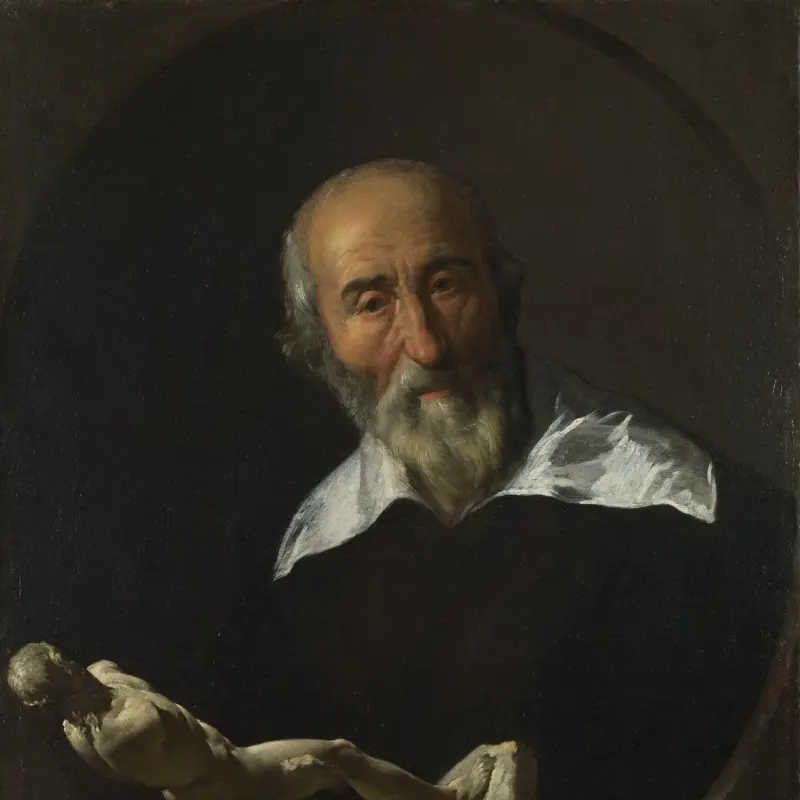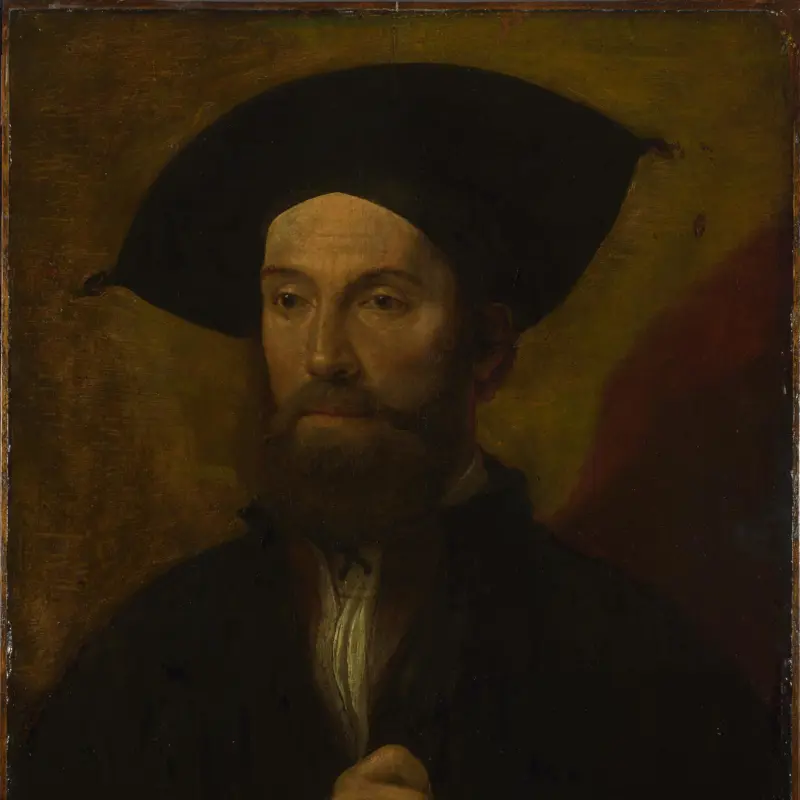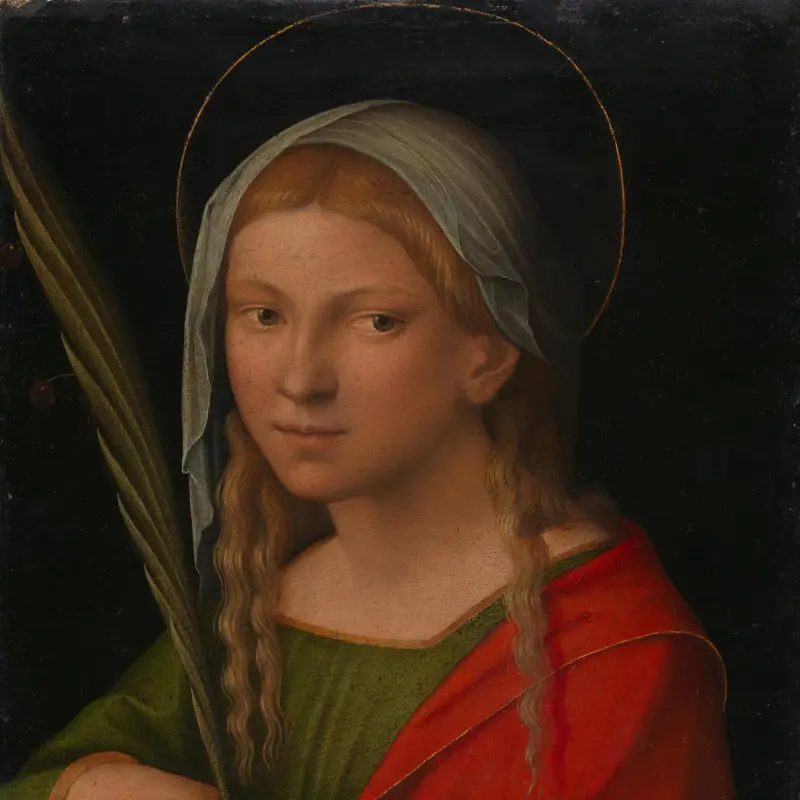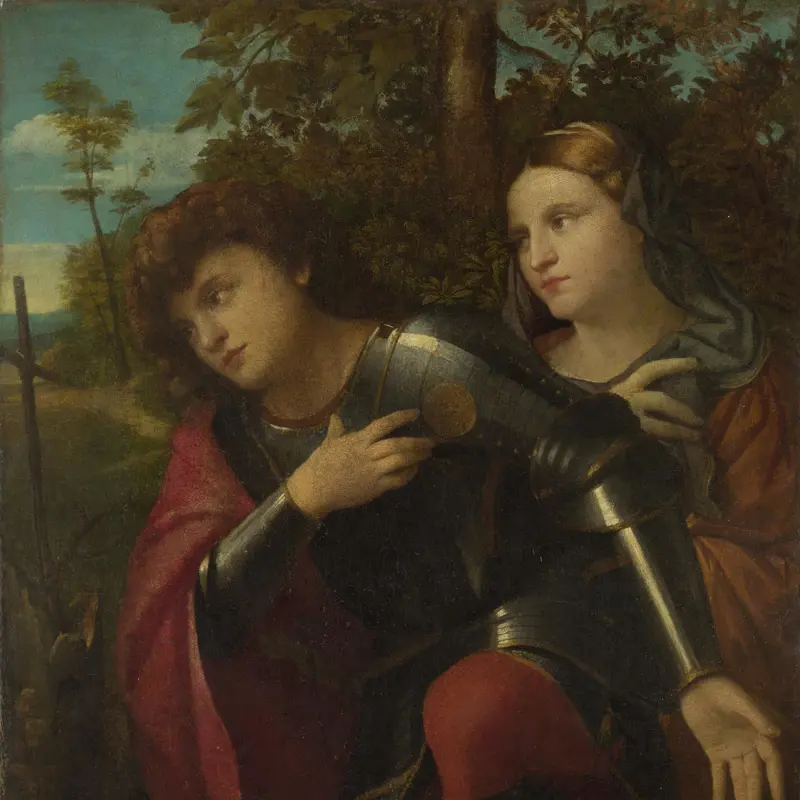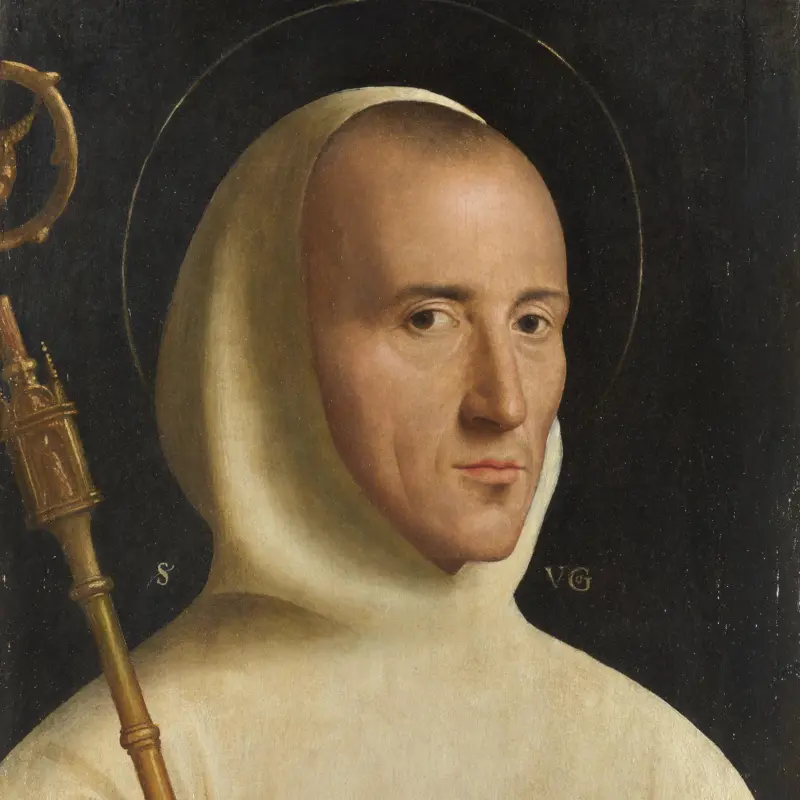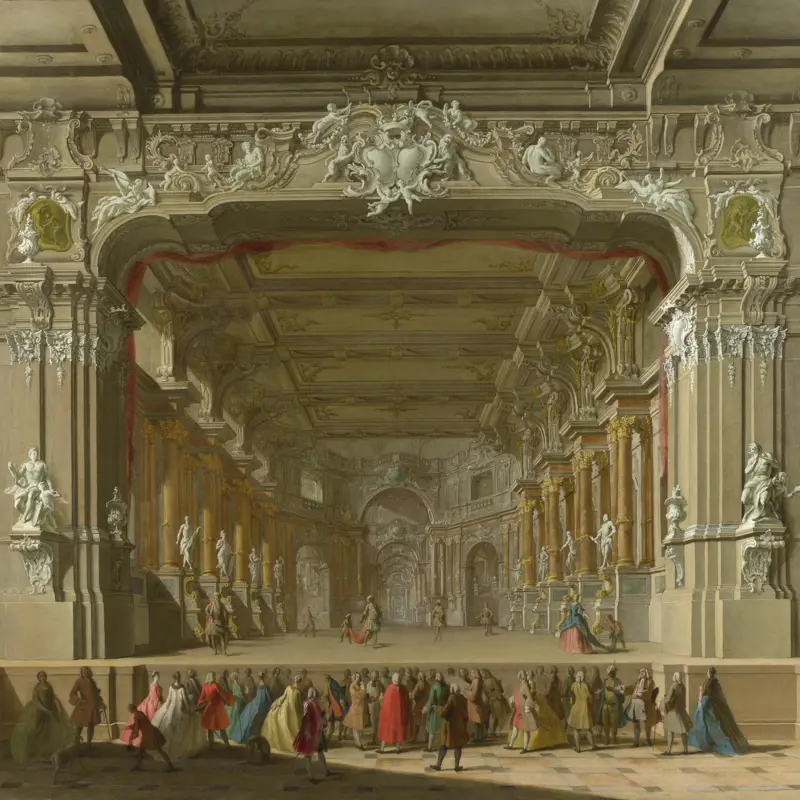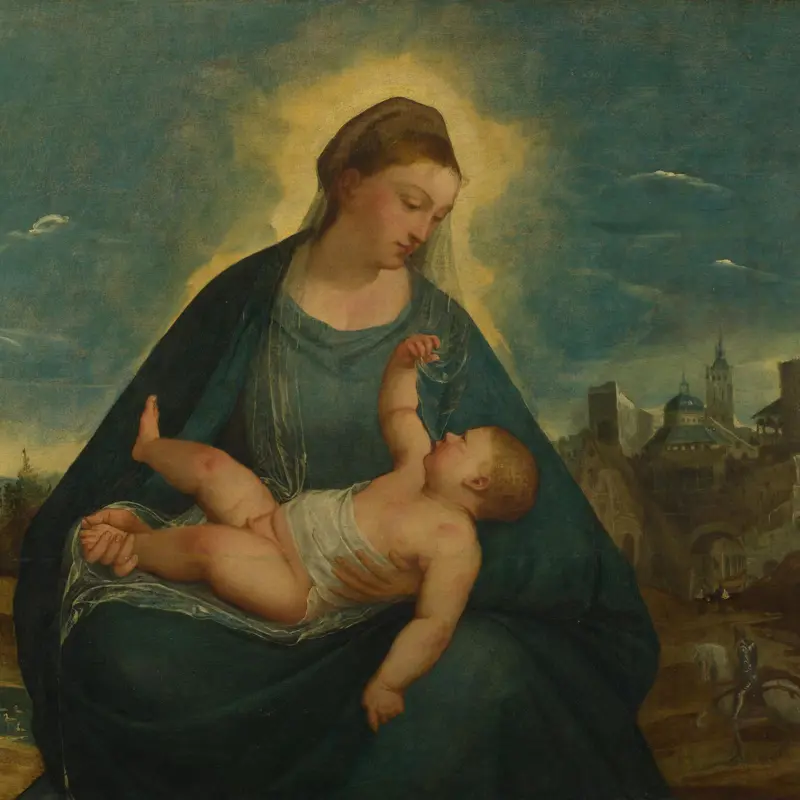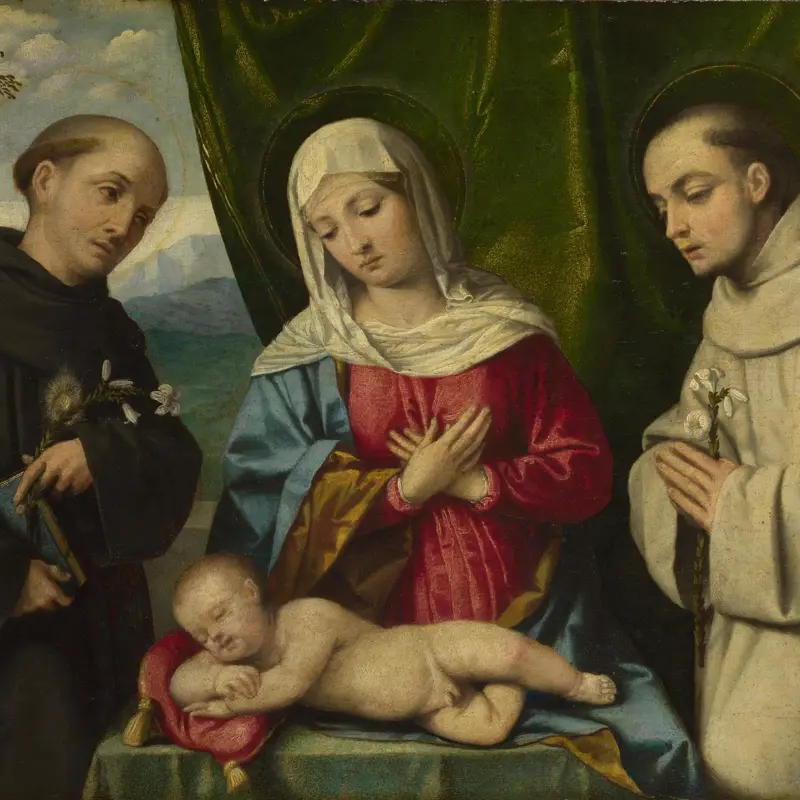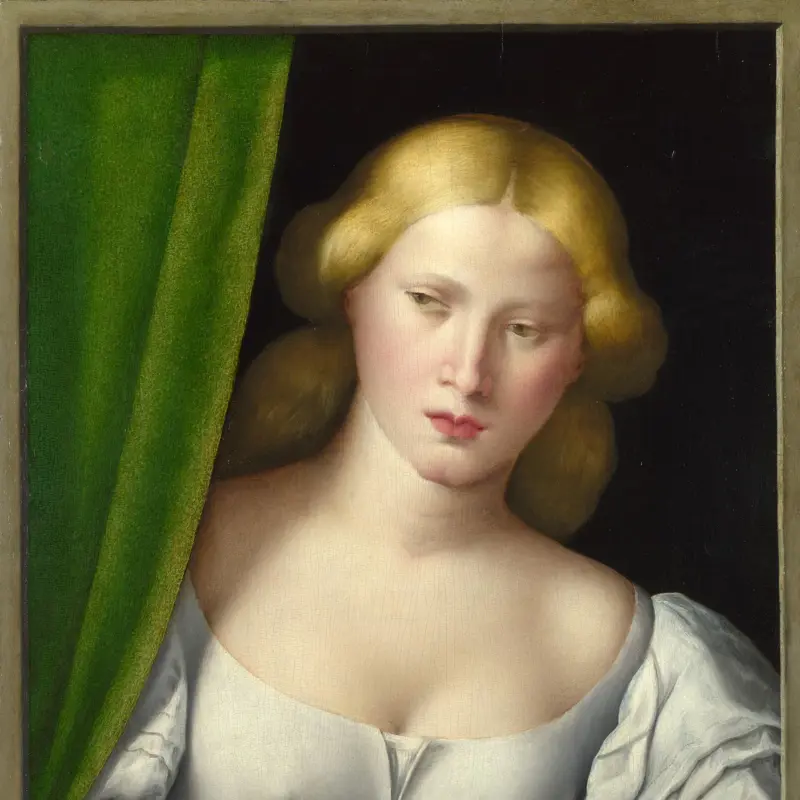Italian, North, 'The Protonotary Giovanni Giuliano (Zuan Zulian)', about 1530-40
About the work
Overview
An elderly man in a lynx-lined jacket looks up from the large book he has been reading. He sits at a table covered with a Mamluk carpet, on which a gilded clock and two letters rest.
The letters are both inscribed identically in Italian: ‘To the most Reverend Monsignor Giuliano with the most honourable (dignified) office of apostolic protonotary directed to Borgo di Ognissanti, Padua.’ Protonotaries attend the pope in his ceremonial duties and witness papal bulls (a type of public decree issued by a pope).
Clocks were relatively rare in sixteenth-century Venetian households. The clock appears to have been an addition as it is painted over a bell. It was probably included simply as a luxury item, although it would also have brought to mind the passing of time. It is rendered with a more palpable sense of its material presence, the pigments built up more carefully, than the rest of the picture; it may have been added by a different artist.
Key facts
Details
- Full title
- The Protonotary Giovanni Giuliano (Zuan Zulian)
- Artist
- Italian, North
- Date made
- about 1530-40
- Medium and support
- oil on canvas
- Dimensions
- 97.5 × 75.5 cm
- Acquisition credit
- Bought, 1881
- Inventory number
- NG1105
- Location
- Not on display
- Collection
- Main Collection
Provenance
Additional information
Text extracted from the ‘Provenance’ section of the catalogue entry in Nicholas Penny, ‘National Gallery Catalogues: The Sixteenth Century Italian Paintings’, vol. 1, ‘Paintings from Bergamo, Brescia and Cremona’, London 2004; for further information, see the full catalogue entry.
Bibliography
-
1959Gould, Cecil, National Gallery Catalogues: The Sixteenth Century Venetian School, London 1959
-
1987Gould, Cecil, National Gallery Catalogues: The Sixteenth Century Italian Schools, London 1987
-
2001
C. Baker and T. Henry, The National Gallery: Complete Illustrated Catalogue, London 2001
-
2004
Penny, Nicholas, National Gallery Catalogues: The Sixteenth Century Italian Paintings, 1, Paintings from Bergamo, Brescia and Cremona, London 2004
About this record
If you know more about this work or have spotted an error, please contact us. Please note that exhibition histories are listed from 2009 onwards. Bibliographies may not be complete; more comprehensive information is available in the National Gallery Library.


